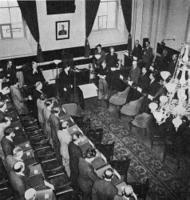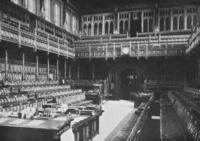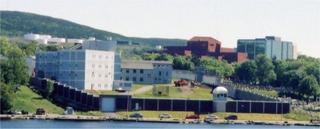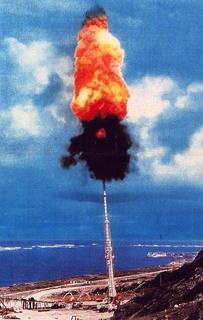A series of unusual e-mails yesterday prompted some further digging into the management plan for the Colonial Building, as discussed in
Our plastic history. That digging prompted some further consideration of the issues and the plan.
There should be no question as to the Colonial Buildings historic importance as the former seat of government for Newfoundland and Labrador and, as a result, being the setting for some of the most important events in the history of Newfoundland and Labrador and of Canada.
Nor should there be any question of the need to restore and preserve the Colonial Building as a public building.
The only issue is the purpose to which the building should be put.
Some may suggest it be an historic site maintained much like Commissariat House either by the provincial government or the federal government or both.
The provincial government's management plan will see it turned into offices for one small section of a provincial government department plus its associated non-government groups.
Given its historic significance, the Colonial Building should become once again the meeting place of the House of Assembly.
Here are some additional thoughts:
1. A surplus legislature.There is something bordering on the bizarre about the idea of having a legislature building in a functioning democracy that is somehow surplus to requirements and in need of a management plan.
That's one of the ideas in
Our plastic history and it remains probably the most powerful reaction I have to the management plan.
Try as I might, I haven't been able to identify another example from the Commonwealth where this situation exists. There have been several examples of legislature buildings in the United States being replaced by new structures. There is one in
Oregon, for example. There's also one in
Illinois and in
Boston. There are also old legislature buildings in Rhode Island and Connecticut.
It seems these legislature buildings were replaced by new ones owing to the need for larger space which the existing buildings and their surrounding land couldn't provide. That's a pretty simple and practical reason. In Boston, the Old State House became Boston City Hall for a period and until it was purchased and restored the building was the site of shops and restaurants.
In Oregon, the Old Capitol is still a government office building. In Illinois and Massachusetts, the old legislature buildings have been restored and maintained solely as historic sites.
In Newfoundland and Labrador, the Colonial Building served as home to both the House of Assembly and the Legislative Council until suspension of responsible government in 1933/34. During the Commission Government period, it served as government offices. The National Convention met in the House of Assembly chamber from 1946 to 1948 to consider the future constitution of the country and from Confederation in 1949 to 1959, the provincial legislature sat there.

First session of the National Convention, 1946
Moving the House of Assembly from the Colonial Building to the newly built Confederation Building seems to have had more to do with the preferences of Premier Joe Smallwood than on any space problems or any technical shortcomings with the old building. [I am open to correction on this point if someone has better information.]
2. Was there a committee? After some checking with some people involved and after listening to John Fitzgerald's interview on CBC Radio this morning, I have come to the conclusion that there was and there wasn't a committee.
There was no committee in the sense that a group of people were given a defined mandate by the Williams administration or its predecessor.
What did exist was the group of people listed on
page 30 of the management plan, chaired by former minister of education Dr. Phil Warren. They examined options, looked at cost estimates, reviewed the issues involved in the different options and worked to find some consensus among the group on what ought to be done with the Colonial Building.
With the change of administration in October 2003, it appears that group (which I'd still call a committee) fell apart with the bulk of the subsequent work being handled by an out-of-province consultant, Dr. John Weiler.
3. Is the plan the same as what this group discussed? Being neither privy to the options discussed nor to the deliberations of the group, I can only judge based on John Fitzgerald's comments to CBC Radio.
Essentially, he argues that the final plan reflects the direction in which the committee was moving. That's my paraphrase of his remarks but I am satisfied they are accurate.
4. What will the Colonial Building be? Essentially, under the management plan, the Colonial Building will become offices for the Provincial Historic Sites program and for upwards of eight not-for-profit groups.
That will be the major function of the building the goes on day-in and day-out.
Some other events will take place there from time to time, such as youth parliament, investiture ceremonies, receptions and potentially wedding photographs.
There will also be a fairly pricey "interpretation" program for the Building so that people can become somewhat familiar with the history of it.
That said, the day-to-day function of the building will be office space, primarily for not-for-profits. The presence of the one government section (Historic Sites) would justify the costs of restoring and rehabilitating the site as well as the ongoing maintenance and security work that would need to be done.
5. What will it cost? Craig Welsh, over at
Townie Bastard questioned the cost of relocating the House of Assembly to the Colonial Building.
Fair enough. I took the government estimates at face value since they represented, supposedly, the cost of bring the Building up to current occupancy standards and addressing the accessibility issues in an old building. Based on what I had in mind, I couldn't see the total cost heading for much more than the proposed $3.0 million or so. It might hit $5.0 million, but there is more than enough cash in the province's budget now or over the next couple of years to fund that amount. Bear in mind that The Rooms as a new facility with significant archaeological issues cost about $40 million. Refurbishing the Colonial Building should not come even close to 25% of that figure; it would be far less than $10 million.
As for the management plan, I can't comment on the cost estimates for the structural section. The "interpretation" bit, which came to $850,000 seemed a bit rich, as in over-priced. It should be possible to produce a much more effective set of interpretive materials without spending the kind of cash involved here, at least on some items.
Someone suggested to me that the cost estimates might be lowballed. I don't know but that is one suggestion I am working to track down.
6. Not-for-profits: are they treated equally? The provincial government does provide support for some not-for-profit groups. However, while there is some internally consistent logic in the management plan of locating the historic sites section with associated not-for-profit non-government groups, there is a question as to whether government should be assisting some groups and not assisting others of equal importance to the delivery of government services to a comparable degree.
There is likely a much better way to support not-for-profits than allowing them to use the Colonial Building.
7. Putting the House of Assembly in the Colonial Building would be too inconvenient. Two advantages of turning the Colonial Building back into the local parliament would be that maintenance, security and upkeep as wells interpretation and all the other bits would come out of the House of Assembly budget allocation. If we moved the Speaker's Office, the Clerk, house committees, the sergeant-at-arms, ushers, television and audio service and the Library to the Building, we would have a functioning legislature. A small adjunct building would not drive the costs up dramatically, but it is something to consider.
Undoubtedly, there are people who would talk about the inconvenience of moving from the Hill to the Building.
It happens in other places. The offices for elected members as well as the government administration offices are frequently in buildings different from the legislature.
Parking can be accommodated by revamping the existing grounds and looking across the street to the Government House grounds.
Undoubtedly, some people will talk about the things to be lost - like the size of the public gallery.
Ok. That's a good point, but in fact, the existing galleries are massive in relation to the usual public traffic during a session. The most frequent visitors to the galleries are political staff and comms directors. They can give up their seats to voters and other visitors and still carry out their function somewhere else like an adjoining room with a television feed.
Quite a bit of functionality for staff was lost in the move to the current location for the House, for example. The loss was largely one of habit and convenience and staff rapidly found new ways to do what they needed to do. Expect the same at the Colonial Building.
Size of the assembly shouldn't be an issue. There are currently 48 elected members of the House of Assembly. That is only slightly larger than the size of the National Convention and the early post-Confederation legislatures. In the current location, the amount of space taken up by the elected members has grown to meet the huge space in which they meet. There is a great deal of unused space both on the floor of the legislature and in the public galleries.

If anyone still wants to quibble, just bear in mind that at Westminster
[see picture at left] only about a third to a half of the elected members of the House of Common can actually sit on benches - they have never had desks of the type seen in Canadian legislatures. During crucial votes, members crowd about with some sitting and most standing.
With the legislature returned to the Colonial Building, the Legislative Council chamber could easily function as both a House committee meeting room as well as the site for investitures and other provincial or national ceremonies. It is a large, well-laid-out room with public galleries for observers.
8. Restoring the House of Assembly to the old chamber would destroy the historic character of the Colonial Building. The Colonial Building as it stands today is not the original structure erected in the middle of the 19th century, nor is it the building that was converted to an archives space in the 1960s. Interior and exterior changes occurred on several occasions as documented in the management plan.
Any decision on restoration will fix the building at a particular point in time and may not adequately represent the entire history of the building when it was in daily use as a legislative complex.
Restoration of the House of Assembly to the Colonial Building would allow the structure to be altered only to meet current occupancy code requirements, while at the same time preserving as many of the essential elements of the interior structure as is practicable and consistent with the Building's designation as an historic site.
Returning the provincial legislature to the Colonial Building would also mitigate against some time when a future government strapped for cash or a department no longer interested in sustaining the Colonial Building looks to close it or skimps on maintenance.
A site of such evident importance should not be left to suffer potentially the same fate as the Old Military Hospital.
9. The Colonial Building should be a National Historic Site. With the exception of
Province House in Prince Edward Island, the Colonial Building is the only national legislative building which is intimately connected to Confederation. Newfoundland and Labrador is the only country to have voted to become part of Canada. While other legislatures debated Confederation, Newfoundland and Labrador is the only existing province in which a national convention was used as the means to determine the country's constitutional fate.
The Colonial Building is a site of historical importance to Canada as a whole.
As such, an integral part of the management plan for the Colonial Building should include designation of the building as a National Historic Site. This designation would provide both the financial and technical support of the Government of Canada to assist in the proper restoration of the Colonial Building. While this could be done no matter what the building is ultimately used for, it could be extremely important in funding its use as the House of Assembly.

 [Left] HMP, from Forest Road looking north
[Left] HMP, from Forest Road looking north






